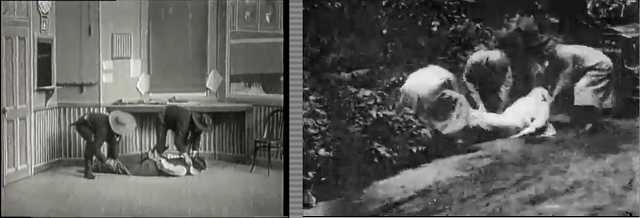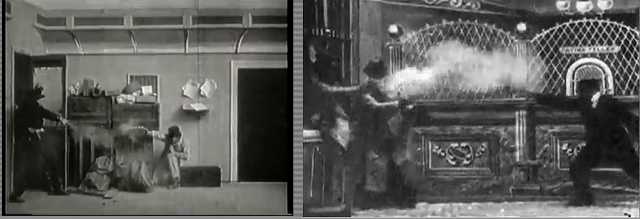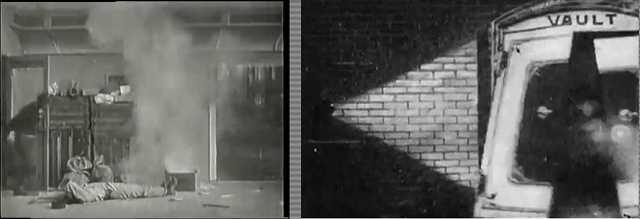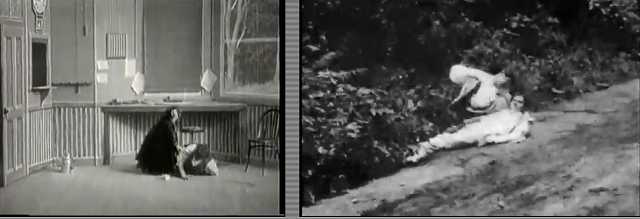Great Art Boldly Robs
Films, like all products of human economic and social life, do not burst full-blown from the ether, but rather build upon antecedents.
"Shakespeare routinely stole plotlines and even whole scenes from other writers for his own plays".
In fact, genre is defined by similarities in form, style, or subject matter, and so cannot exist without the commonality that results from
a significant degree of replication.
Bold Bank Robbery followed in the tracks of films in a popular new genre: the crime film. Its most direct influences were
the 1903 films The Great Train Robbery and A Daring Daylight Burglary.
Edwin S. Porter's The Great Train Robbery (Dec 1903)
Although Bold Bank Robbery is clearly not a remake of The Great Train Robbery, it does owe its existence to the
phenomenal success of that film, as described in
Genre and Hollywood
:
Perhaps most importantly, "The Great Train Robbery" was part of a violent crime genre which had been imported from England
a few months earlier. Porter was consciously working (and cinema patrons viewing) within a framework established by Sheffield Photo's
"A Daring Daylight Burglary", British Gaumont/Watter Haggart's "Desperate Poaching Affray", and R.W. Paul's
"Trailed By Bloodhounds"...Its success did not encourage the production of other Westerns, but other films of crime -
Lubin's "The Bold Bank Robbery", Paley and Steiner's "Burned At The Stake", and Porter's own
"The Capture of Yegg Bank Burglars".
A closer inspection reveals that elements of Bold Bank Robbery also have parallels in The Great Train Robbery.
-
The robbery starts off with forcing a man to assist the robbery. The victim is then knocked out, and left bound and gagged.

-
Then, a loyal employee gets shot while trying to safeguard the corporation's money...
 ...followed by robbers exploding the repository.
...followed by robbers exploding the repository.

-
Later, the bound and gagged victim is revived by a young female. The revived victim provides information that leads to
the capture of the outlaws.

Great Art Also Gives Back
Bold Bank Robbery paid handsome dividends on its borrowed ideas, contributing its own ideas that were far ahead of the norm
for films of that era.